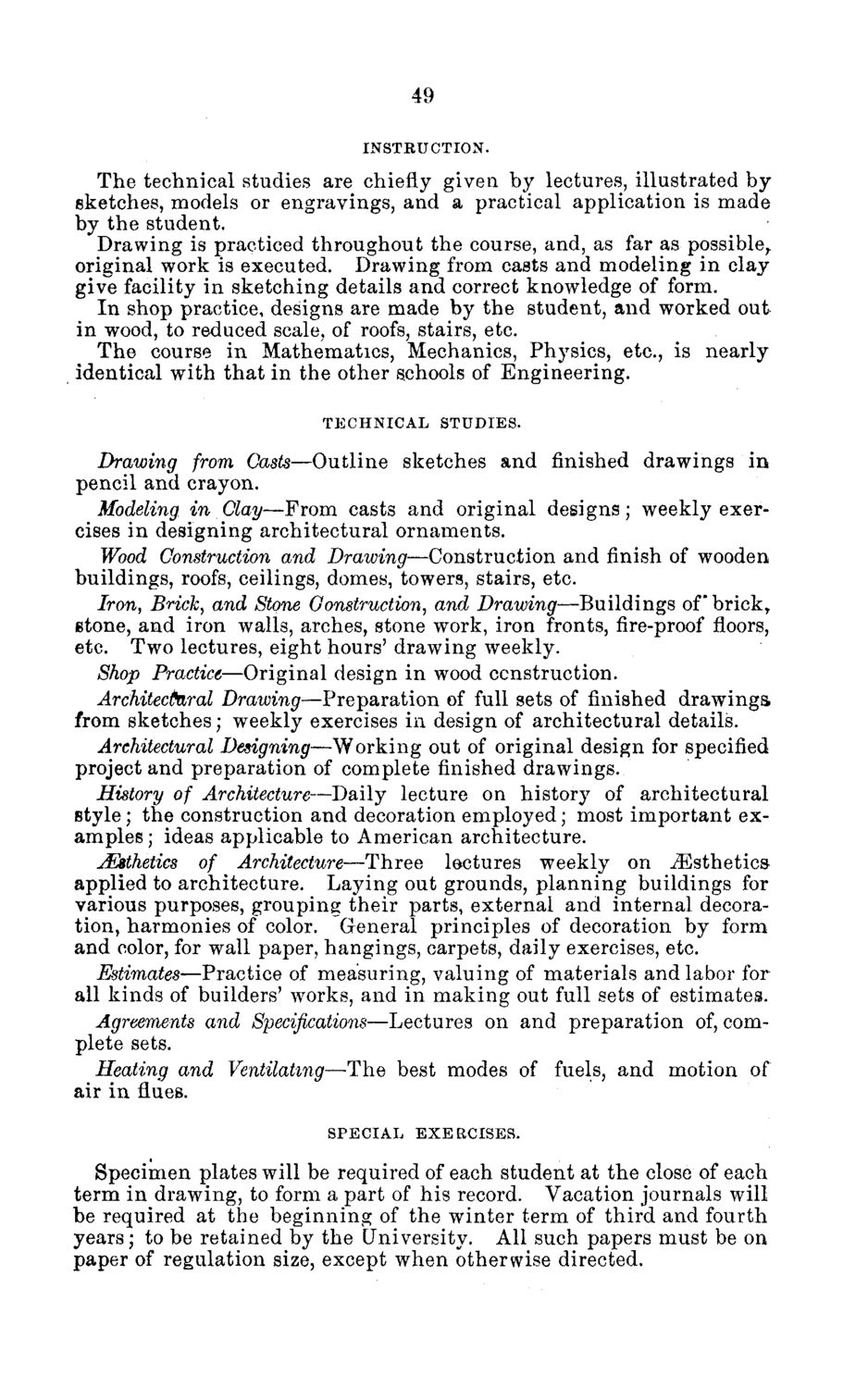| |
| |
Caption: Board of Trustees Minutes - 1876
This is a reduced-resolution page image for fast online browsing.

EXTRACTED TEXT FROM PAGE:
49 INSTRUCTION. The technical studies are chiefly given by lectures, illustrated by sketches, models or engravings, and a practical application is made by the student. Drawing is practiced throughout the course, and, as far as possible,, original work is executed. Drawing from casts and modeling in clay give facility in sketching details and correct knowledge of form. In shop practice, designs are made by the student, and worked out in wood, to reduced scale, of roofs, stairs, etc. The course in Mathematics, Mechanics, Physics, etc., is nearly identical with that in the other schools of Engineering. TECHNICAL STUDIES. Drawing from Casts—Outline sketches and finished drawings in pencil and crayon. Modeling in Clay—From casts and original designs; weekly exercises in designing architectural ornaments. Wood Construction and Drawing—Construction and finish of wooden buildings, roofs, ceilings, domes, towers, stairs, etc. Iron, Brick, and Stone Construction, and Drawing—Buildings of brick r stone, and iron walls, arches, stone work, iron fronts, fire-proof floors, etc. Two lectures, eight hours' drawing weekly. Shop Practice—Original design in wood construction. Architectural Drawing—Preparation of full sets of finished drawings from sketches; weekly exercises in design of architectural details. Architectural Designing—Working out of original design for specified project and preparation of complete finished drawings. History of Architecture—Daily lecture on history of architectural style; the construction and decoration employed; most important examples ; ideas applicable to American architecture. ^Esthetics of Architecture—Three lectures weekly on ^Esthetics applied to architecture. Laying out grounds, planning buildings for various purposes, grouping their parts, external and internal decoration, harmonies of color. General principles of decoration by form and color, for wall paper, hangings, carpets, daily exercises, etc. Estimates—Practice of measuring, valuing of materials and labor for all kinds of builders' works, and in making out full sets of estimates. Agreements and Specifications—Lectures on and preparation of, complete sets. Heating and Ventilating—The best modes of fuels, and motion of air in flues. SPECIAL EXERCISES. Specimen plates will be required of each student at the close of each term in drawing, to form a part of his record. Vacation journals will be required at the beginning of the winter term of third and fourth years; to be retained by the University. All such papers must be on paper of regulation size, except when otherwise directed.
| |